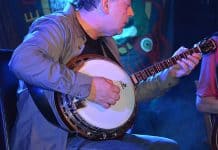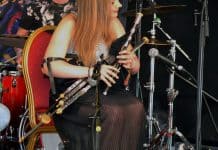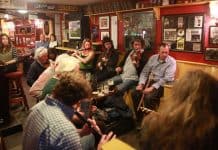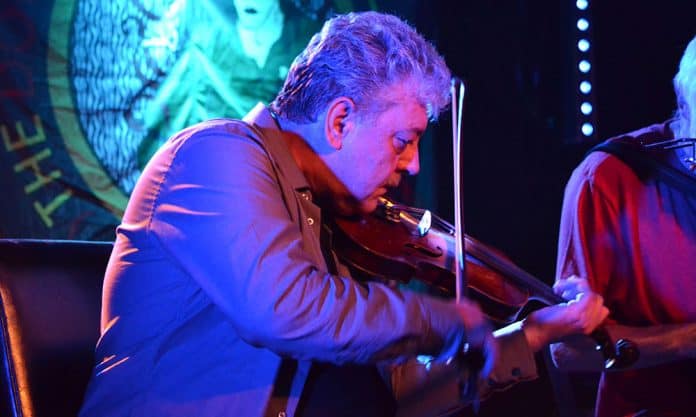
Irish fiddle history goes back thousands of years to a time and place far from Celtic Ireland.
It is one of the most essential instruments in any Irish Traditional Music band, and the version played today is identical to the violins that are played in both classical and modern music.
Such instruments are referred to as ‘fiddles’ rather than ‘violins’ simply to indicate the style and repertory of music that they are synonymous with.
History of the Irish Fiddle
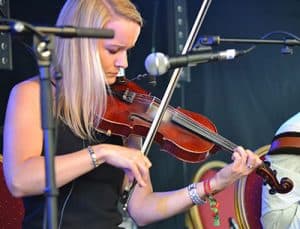
A fiddle is a stringed instrument that is played with a bow.
They have existed in many forms for thousands of years, with the earliest known example dating from 10th-century Asia.
They are descended from the lute, which was a basic instrument with strings made most often from gut.
Bows exists in a variety of forms and sizes and normally consist of a long wooden structure with a length of hair or other material running from end to end.
The instantly recognisable sound of the instrument is produced via the friction created by the bow as it is run over the strings.
Different notes are achieved by pressing the strings at various points down the neck of the instrument with the tips of the fingers.
The resultant vibrations are intensified by the resonator (which may have cut-out sound holes in the front).
It can be played with either the body or the neck uppermost. The side that is stringed faces away from the player.
In Europe, a huge variety of stringed bow-played instruments have been in use since the arrival of the bow technique from Asia in the 10th century.
By the 1700s, the classic four-stringed version was an established instrument in Italy, from where it spread over the whole of continental Europe and beyond.
This version, used in the sort of Irish Traditional Music commonly played in a seisún, comprised gut strings, a foreshortened fingerboard and a diminutive arched bow and was typically played with the body leaning on the musician’s chest and the neck facing downwards.
Refinements
Over time, various refinements were made to the design, including a longer fingerboard that was placed at an angle.
The gut strings were also replaced with ones made from steel or wire, and shoulder and chin rests were added to make it more comfortable to play.
Thus, by the early 1800s, the instrument had reached its present form. Its expressive sounds and flexible nature meant that it was able to adapt to the personality of many forms of indigenous music, including Irish music.
High Status
This is almost certainly the most universally played instrument in Irish music, and it is accorded a high status among musicians.
It is a fairly quiet instrument which can be played in a seated or standing position.
The bow can be held in a number of ways – at the nut or at some point along the length.
Fiddling is a very individual art, and the bow wrist may be stiff or loose and the pressure heavy or light, depending on the style of the musician.
The instrument may be played solo or as part of an ensemble, and it is an essential part of any traditional Irish seisún.
Much of the music that is suited to it is in the dance style, though there are also many slower tunes that are synonymous with the pleading sound that the very best players can produce.
Irish Style
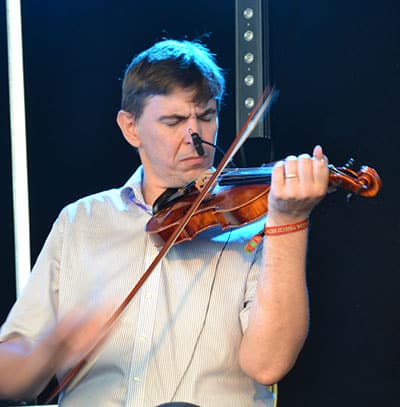
There is a bias towards single bowing, and the bow strokes themselves are normally short.
The vibrato technique is not often used, in the same way that many characteristics of more modern classical playing tend to be avoided.
That said, a number of up-and-coming younger players are starting to add techniques more commonly seen among American bluegrass specialists.
The standard ornaments of Irish music – such as rolls, triplets, grace notes and so forth – are all utilised by musicians.
In addition some specific to the instrument techniques such as rhythmic effects created by the bowing technique and also droning and double-stopping have evolved in popularity.
Sometimes two players will play the same tune but an octave apart.
Regional Style
A number of distinctive regional styles of Irish fiddle playing in traditional music and seisún survive to this day, particularly in the west of Ireland.
For example, the ‘Donegal’ style is fast-paced with a minimum of ornamentation and an emphasis on single-bowing. While the styles in other counties, including Cork, Kerry, Sligo, Galway and Clare, are generally slower, with a bowing technique that is longer and has far more embellishments.
However, today most modern musicians now have their own idiosyncratic style – some with a highly eclectic style and others that play in homage to one of the virtuosos of old.
Noted Irish Fiddle Players
Since the ‘Roaring 20s’ the fiddle has been particularly influential in the entire genre of Irish Traditional Music playing and was popularised by three of the most talented players in history – James Morrison, Paddy Killoran and Michael Coleman, all of whom were born in Sligo.
In particular, Michael Coleman took New York by storm during the 1920s, playing as he did in the distinctive Sligo style, which is characterised by its great speed, flamboyance and heavy ornamentation.
Many of his settings of Irish classic tunes have become the gold standard among modern musicians.
In addition, his influence spread far and wide via the recordings of his work, inspiring seisún players both in his native Sligo and much further afield, and his legacy continues to this day.

